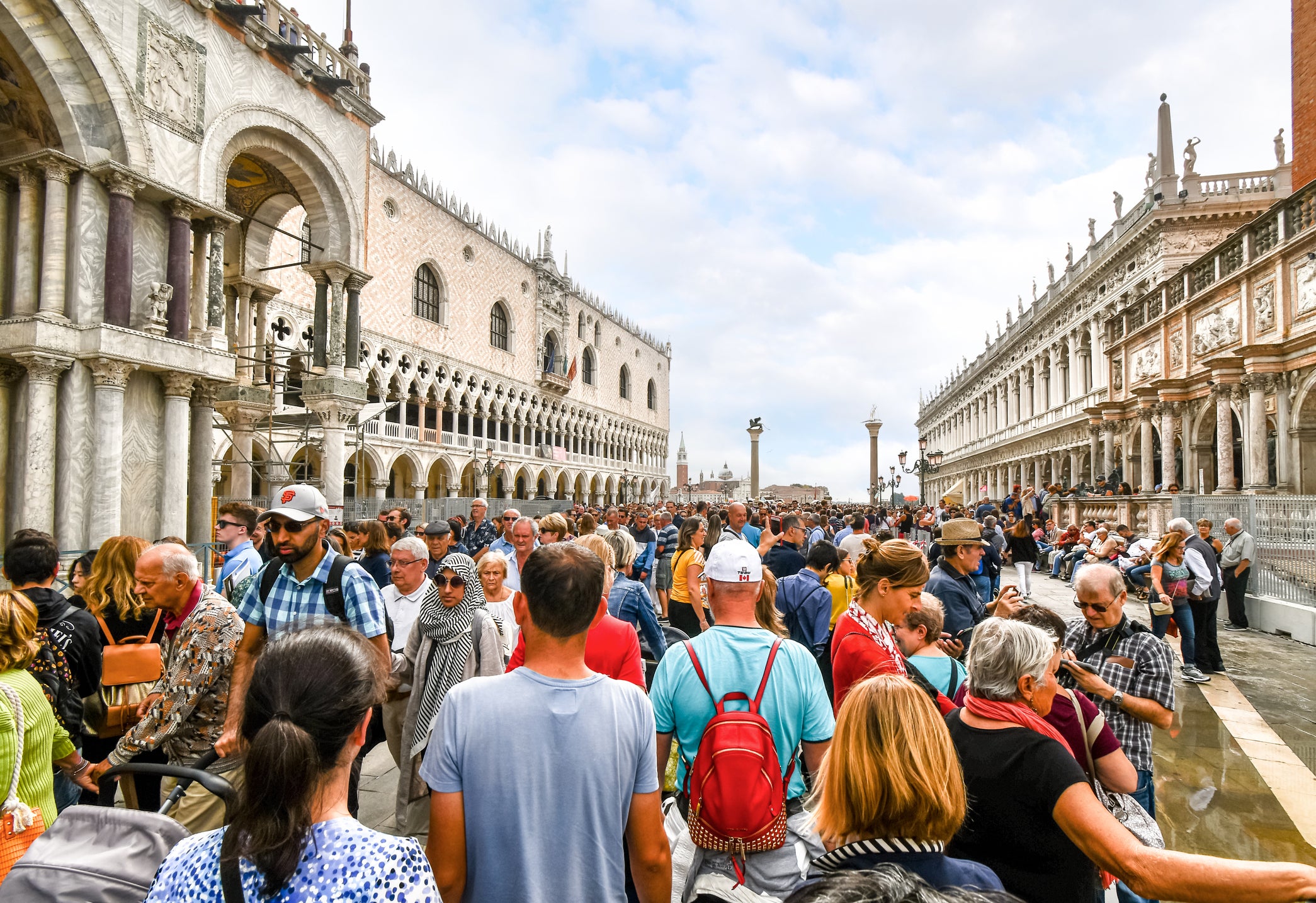Venice set to change entry charge in 2025 after results of pilot scheme
Your support helps us to tell the story
From reproductive rights to climate change to Big Tech, The Independent is on the ground when the story is developing. Whether it's investigating the financials of Elon Musk's pro-Trump PAC or producing our latest documentary, 'The A Word', which shines a light on the American women fighting for reproductive rights, we know how important it is to parse out the facts from the messaging.
At such a critical moment in US history, we need reporters on the ground. Your donation allows us to keep sending journalists to speak to both sides of the story.
The Independent is trusted by Americans across the entire political spectrum. And unlike many other quality news outlets, we choose not to lock Americans out of our reporting and analysis with paywalls. We believe quality journalism should be available to everyone, paid for by those who can afford it.
Your support makes all the difference.Venice’s experiment with payment systems for tourists only had a small impact on reducing crowds, a politician has said, meaning prices will almost certainly be hiked next year.
Around 30 million tourists visit Venice in a typical year – with about seven out of 10 (or 21 million) staying only for the day. Just before the Covid pandemic, Unesco warned the city’s “status as a World Heritage property is in jeopardy”.
In a world first, the Italian destination introduced a 5-euro ($5.44) charge in April for daytrippers arriving on particularly congested days, hoping the levy would deter some people from visiting.
The pilot scheme, which has been watched closely by other European tourist hotspots, covered just 29 days and will end on Sunday, opening the way for a period of consultation to decide how to proceed with the project in future.

Simone Venturini, the city councillor responsible for tourism and social cohesion, said the initial assessment was positive and confirmed the system would be renewed in 2025, but acknowledged that there were still large crowds.
“On some weekends there were less people than the same time last year ... but no one expected that all the day trippers would miraculously disappear,” he told Reuters, speaking by telephone from Venice.
“It will be more effective in the coming years when we increase the number of days and lift the price,” he added, without saying how much visitors might have to pay in 2025.
Current system
How does the current system work?
Any visitor who wishes to be in the historic heart of Venice – anywhere in the city apart from the Piazzale Roma transport access area and the offshore islands – between 8.30am and 4pm on the prescribed dates must register online, in advance, at cda.ve.it/en.
You will need a QR code on your smartphone or printed out to be allowed inside the ancient city.
If you simply want to pay the fee, clicking on “Pay the access fee” will take you through a fairly straightforward process. One tricky aspect is that you have to pretend you have read the privacy policy (all in Italian) by clicking on it before you can enable a checkbox.
The city council is looking to discourage daytrippers, especially during weekends and holidays when visitors can top 100,000 - double the number of local residents. People with hotel reservations have not had to pay the levy.
Not everyone in Venice, which is a UNESCO world heritage site, thinks the scheme should continue.
“It has been a total failure. The city is still packed with tourists,” said opposition councillor Giovanni Andrea Martini, adding that the number of people paying the charge had fallen as word spread that the threatened fines were not materialising.
Venturini acknowledged there had been “very few, or probably no fines”, but said it had been a deliberately soft start. “In this experimental phase, rather than fining people, we have focused on informing them,” he said.
Martini advocated instead a free booking system for visitor slots to prevent lower-income families from being priced out, but that was able to track prospective tourist arrivals.
“We need to be able to warn people that if they come on certain days they are not going to have a good time,” he said, adding that the long-term goal should be to draw back full-term residents who have drained away from the city in recent years as short-term lets increasingly dominate the housing market.

Join our commenting forum
Join thought-provoking conversations, follow other Independent readers and see their replies
Comments